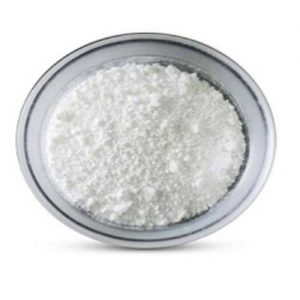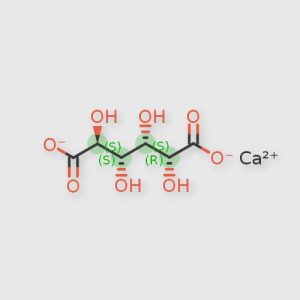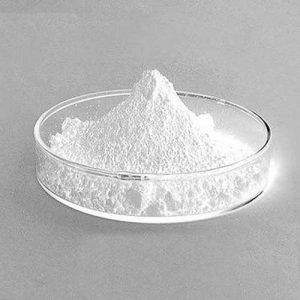- Have any questions?
- 91-22-23726950
- 91-22-23774610

Sodium Butyrate
May 7, 2019
Sodium Feredetate
May 7, 2019Sodium Carbonate
Muby Chemicals established in the year 1976, is pioneer in Manufacturing Chemicals for Oil and Gas Exploration, Hydraulic Fracturing (Fracking) and coiled tube Chemicals.Our advanced chemistry leading to an innovative and high-performance product range is coupled with effective on and off site management services.
We are manufacturer of Specialty chemicals, Pharmaceutical Excipients, Fragrance & Flavorchemicals in India, which are of IP, BP, USP, Ph. Eur., FCC or Food Grade, ACS, AR or Analytical Reagent Grade, LR or Laboratory Reagent Grade, Pure and Technical Grades of various chemicals.
British Pharmacopoeia 2009
Sodium Carbonate Decahydrate BP
Na2CO3-10H2O — 286.1 — 497-19-8
DEFINITION
Content
36.7 per cent to 40.0 per cent of Na2CO3.
CHARACTERS
Appearance
White or almost white, crystalline powder or colourless, transparent crystals, efflorescent.
Solubility
Freely soluble in water, practically insoluble in ethanol (96 per cent).
IDENTIFICATION
A. Dissolve 1 g in water R and dilute to 10 ml with the same solvent. The solution is strongly alkaline.
B. The solution prepared for identification test A gives the reaction of carbonates.
C. The solution prepared for identification test A gives reaction of sodium.
TESTS
Solution S
Dissolve 5.0 g in portions in a mixture of 5 ml of hydrochloric acid and 25 ml of distilled water. Heat the solution to boiling and cool. Add dilute sodium hydroxide solution until the solution is neutral and dilute to 50 ml with distilled water.
Appearance of solution
The solution is clear and not more intensely coloured than reference.
Dissolve 4.0 g in 10 ml of water.
Alkali hydroxides and bicarbonates
Dissolve 1.0 g in 20 ml of water, add 20 ml of barium chloride solution and filter. To 10 ml of the filtrate add 0.1 ml of phenolphthalein solution. The solution does not become red. Heat the remainder of the filtrate to boiling for 2 min. The solution remains clear.
Chlorides
Maximum 50 ppm.
Sulphate
Maximum 100 ppm, determined on solution S.
Arsenic
Maximum 2 ppm, determined on 5 ml of solution S.
Iron
Maximum 20 ppm.
Heavy metals
Maximum 20 ppm.
ASSAY
Dissolve 2.000 g in 25 ml of water. Titrate with 1 M hydrochloric acid, using 0.2 ml of methyl orange solution R as indicator. 1 ml of 1 M hydrochloric acid is equivalent to 52.99 mg of Na2CO3.
British Pharmacopoeia 2009
Sodium Carbonate Monohydrate BP
Na2CO3-H2O — 124.0 — 5698-11-6
DEFINITION
Content
83.0 per cent to 87.5 per cent of Na2CO3.
CHARACTERS
Appearance
White or almost white, crystalline powder or colourless crystals.
Solubility: Freely soluble in water, practically insoluble in ethanol (96 per cent).
IDENTIFICATION
A. Dissolve 1 g in water R and dilute to 10 ml with the same solvent. The solution is strongly alkaline.
B. The solution prepared for identification test A gives the reaction of carbonates.
C. The solution prepared for identification test A gives reaction of sodium.
TESTS
Solution S
Dissolve 2.0 g in portions in a mixture of 5 ml of hydrochloric acid and 25 ml of distilled water. Heat the solution to boiling and cool. Add dilute sodium hydroxide solution until the solution is neutral and dilute to 50 ml with distilled water.
Appearance of solution
The solution is clear and not more intensely coloured than reference solution.
Dissolve 2.0 g in 10 ml of water.
Alkali hydroxides and bicarbonates
Dissolve 0.4 g in 20 ml of water R, add 20 ml of barium chloride solution and filter. To 10 ml of the filtrate add 0.1 ml of phenolphthalein solution. The solution does not become red. Heat the remainder of the filtrate to boiling for 2 min. The solution remains clear.
Chlorides
Maximum 125 ppm.
Sulphate
Maximum 250 ppm, determined on solution S.
Arsenic
Maximum 5 ppm, determined on 5 ml of solution S.
Iron
Maximum 50 ppm.
Dilute 5 ml of solution S to 10 ml with water.
Heavy metals
Maximum 50 ppm.
ASSAY
Dissolve 1.000 g in 25 ml of water R. Titrate with 1 M hydrochloric acid , using 0.2 ml of methyl orange solution R as indicator. 1 ml of 1 M hydrochloric acid is equivalent to 52.99 mg of Na2CO3.
Sodium Carbonate USP NF
Na2CO3 (anhydrous) 105.99
Carbonic acid, disodium salt.
Disodium carbonate [497-19-8]
Monohydrate 124.00 [5968-11-6]
It is anhydrous or contains one molecule of water of hydration. It contains not less than 99.5 percent and not more than 100.5 percent of Na2CO3, calculated on the anhydrous basis.
Identification— It responds to the tests for Sodium 191 and for Carbonate.
Water— Dry about 2 g, accurately weighed, at 105 for 4 hours: the anhydrous form loses not more than 0.5%, and the hydrous form between 12.0% and 15.0%, of its weight.
Heavy metals—the limit is 0.001%.
Assay— Transfer the anhydrous substance obtained in the test for Water to a flask with the aid of 50 mL of water, add methyl red TS, and titrate with 1 N sulfuric acid VS. Add the acid slowly, with constant stirring, until the solution becomes faintly pink. Heat the solution to boiling, cool, and continue the titration. Heat again to boiling, and titrate further as necessary until the faint pink color is no longer affected by continued boiling. Each mL of 1 N sulfuric acid is equivalent to 52.99 mg of Na2CO3.
Sodium Carbonate FCC Food Grade
Soda Ash
Na2CO3 Formula wt, anhydrous 105.99
Na2CO3·H2O Formula wt, monohydrate 124.00
Na2CO3·10H2O Formula wt, Decahydrate 286.14
INS: 500(i) CAS: anhydrous [497-19-8]
CAS: monohydrate [5968-11-6]
CAS: decahydrate [6132-02-1]
DESCRIPTION
It occurs as colorless crystals or as a white, granular or crystalline powder. It is anhydrous or may contain 1 or 10 molecules of water of hydration. It is freely soluble in water and insoluble in ethanol. Its solutions are alkaline to litmus. The anhydrous salt is hygroscopic, and the two hydrates are efflorescent. The decahydrate melts at about 32°.
Function: pH control.
REQUIREMENTS
Identification: A sample gives positive tests for Sodium and for Carbonate.
Assay: Not less than 99.5% and not more than 100.5% of Na2CO3 after drying.
Lead: Not more than 4 mg/kg.
Loss on Drying Anhydrous: Not more than 1%; Monohydrate: Between 12.0% and 15.0%; Decahydrate: Between 55.0% and 65.0%.
Sodium Carbonate Monohydrate ACS Analytical Reagent
Reagent Chemicals
ACS Specifications
Sodium Carbonate Monohydrate
Na2CO3-H2O
Formula Wt 124.00
CAS Number 5968-11-6
REQUIREMENTS
Assay: 99.5% Na2CO3-H2O min
Loss on drying at 150C: 13.0-15.0%
MAXIMUM ALLOWABLE
Insoluble matter ………………………. 0.01%
Chloride (Cl) ………………………….. 0.001%
Nitrogen compounds (as N) ………. 0.001%
Phosphate (PO4) …………………….. 5 ppm
Silica (SiO4) …………………………… 0.005%
Sulfur compounds (as SO4) ………. 0.004%
Ammonium hydroxide precipitate .. 0.01%
Heavy metals (as Pb) ……………….. 5 ppm
Iron (Fe) ……………………………….. 5 ppm
Calcium (Ca) ………………………….. 0.03%
Magnesium (Mg) …………………….. 0.005%
Potassium (K) ………………………… 0.005%
Sodium Carbonate, Anhydrous ACS Analytical Reagent
Reagent Chemicals
ACS Specifications
Sodium Carbonate, Anhydrous
Na2CO3
Formula Wt 105.99
CAS Number 497-19-8
REQUIREMENTS
Assay (dried basis) min. 99.5% Na2CO3
MAXIMUM ALLOWABLE
Insoluble matter ………………………. 0.01%
Loss on heating at 285C …………… 1.0%
Chloride (Cl) ………………………….. 0.001%
Nitrogen compounds (as N) ………. 0.001%
Phosphate (PO4) …………………….. 0.001%
Silica (SiO4) …………………………… 0.005%
Sulfur compounds (as SO4) ………. 0.003%
Ammonium hydroxide precipitate .. 0.01%
Heavy metals (as Pb) ……………….. 5 ppm
Iron (Fe) ……………………………….. 5 ppm
Calcium (Ca) …………………………. 0.03%
Magnesium (Mg) ……………………. 0.005%
Potassium (K) ……………………….. 0.005%
Sodium Carbonate ACS, Alkalimetric Standard Analytical Reagent
Reagent Chemicals
ACS Specifications
Sodium Carbonate, Alkalimetric Standard
Na2CO3
Formula Wt 105.99
CAS Number 497-19-8
NOTE. For use as an alkalimetric standard this reagent should be heated at 285C for 2h.
REQUIREMENTS
Assay (dried basis) …. 99.95-100.05% Na2CO3
MAXIMUM ALLOWABLE
Insoluble matter ………………………. 0.01%
Loss on heating at 285C …………… 1.0%
Chloride (Cl) ………………………….. 0.001%
Nitrogen compounds (as N) ……… 0.001%
Phosphate (PO4) ……………………. 0.001%
Silica (SiO4) ………………………….. 0.005%
Sulfur compounds (as SO4) ……… 0.003%
Ammonium hydroxide precipitate .. 0.01%
Heavy metals (as Pb) ………………. 5 ppm
Iron (Fe) ………………………………. 5 ppm
Potassium (K) ……………………….. 0.005%
Calcium (Ca) …………………………. 0.02%
Magnesium (Mg) ……………………. 0.004%




